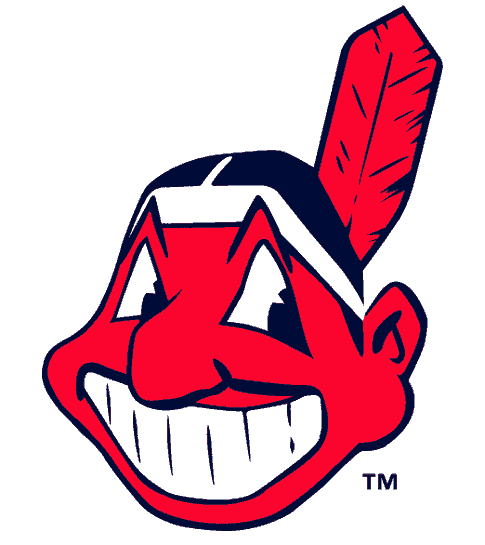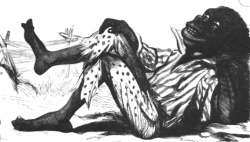Oh, DC Comics in the 1940s--whatever shall we do with you?
Okay, it’s the 1940s, and I get it. But here’s my question: Does anyone have any idea why Bob Kane (who’s credited as penciller) would draw black people like this? Was he just an unrepentant racist who saw black people as sub-human? I have to assume he had actually seen black people, as he lived in New York. So he knew that in real life, black people didn’t look like this. Plus, he was Jewish, so he knew how Jews had been depicted in popular culture, in a ridiculous and racist fashion. Plus, there are plenty of caricatures in these comics (some drawn by Kane, some not), but even the buffoons are recognizably human. Was this depiction so ingrained in Americana that Kane couldn’t overcome it? Was there any pressure on him to depict blacks this way? I don’t understand how anyone could ever actually see a black person and think this was an okay way to draw them.
March 28, 2009 at 11:53 am
I don’t understand why this is so difficult to believe or understand. He probably didn’t like black people and wanted to portray them negatively. Creators do the same thing now, except now it’s not with racial groups, it’s with cultural, political, and religious groups.
z
March 28, 2009 at 12:33 pm
I don’t think the conversation should be about whether or not to exculpate Bob Kane. Yes, racist caricatures have a long, storied history in comics, and yes, Kane probably knew exactly what he was doing when he drew these sleeping-car workers as grotesque “sambo” figures, and yes, this was the norm in the U.S. and Europe (see Tintin, the jazz singer, etc) and yes, it marks ideologies of white supremacy and the very material conditions of exploitation and exclusion in which Black people found themselves even as they or their sons/brothers/husbands went off to die for their country in segregated regiments.
It’s not as if Gunnar Myrdal’s An American Dilemma banished all racist representations from comics though. The Mandarin was some straight up Fu Manchu yellow peril orientalism, racist depictions of blacks, latinos, and asians persist in the present. (”Sweet christmas” indeed.) So while I do think this is a particularly galling example of outmoded racial stereotypes, I think a broader conversation about race and graphic narrative needs to involve a more developed historical frame.
Felipe
March 28, 2009 at 1:32 pm
>Hmmm. So I wonder what we’re doing today that people will find inexplicable (and probably justly so) 70 years from now?
“So, back in the day there was only a two or three gay characters. I remember this one, Extraño, who was actually depicted as completely flamboyant… Then, we found out this was because he was “diseased” and then he was “cured” from it. Seriously. If you´re gay comic character you´re most likely in a supporting role, bound to die of AIDS sooner or later for shock value. And no, of course, they never showed two gay super-heroes kissing. I´m talking about a time when gay marriage was not even legal!”
Greg Burgas
March 28, 2009 at 1:42 pm
I should point out that I also recently got the second volume of (the golden age) Sheena stories, and the black people in those stories were not drawn stereotypically at all. They look like people. There is some stereotypical writing about the Africans, but not as much as you might expect. They’re definitely black people (not “colored” white people), but they look like human beings. So this isn’t necessarily “just the way it was done.”
Adam Weisman
March 28, 2009 at 1:49 pm
Oh, we’re certainly more progressive and enlightened today…
we’d never accept such offensive imagery.
Why you’d never see an image like this

in popular culture…
Da Fug
March 28, 2009 at 8:50 pm
I’ll just throw in some support for Adam here in that it ASTOUNDS me that people can’t see the Indian sports logos as racist! And I bet it would take one freaking press conference with the current president for it to change. Just have Obama hold up a Cleveland Indians logo in one hand and a cartoon similar to the ones above in the other and the issue would be eminently clear.
Brad Curran
March 28, 2009 at 8:54 pm
It’s always amazed me that the Redskins can get away with having a name that’s a racial slur solely on tradition. Although Cowboys vs. Non Descript Native American/American Indian Tribes just doesn’t have the same ring to it, I have to say.
comb & razor
March 28, 2009 at 10:29 pm
What goes through the mind of the artists who draw this? I don’t know… Probably not too much. Even if the artist lived in New York City and saw black people everyday, I don’t think it would have had that much effect on his employment of these conventions because most comic artists didn’t really draw from life in those days (or these days, for that matter).
Think about the way the human body is rendered in comics… Before you had someone like Neal Adams coming with a more naturalistic depiction of anatomy, most comic artists just thoughtlessly copied what they saw in other comics–-hence you get those lumpy muscles and outsize pecs and all kinds of stuff you know they probably don’t see around them in real life, but they just draw them that what because… well, that’s how you draw comics.
Mike
March 29, 2009 at 10:23 am
People didn’t flip from being racist to being non-racist in 20 years (if you insist on the election depending on that kind of change taking place). We simply spent our lives thinking the same 10 seconds of thought over and over until enough of us were forced to break that loop to make a change. And when we give ourselves only 10 seconds to think about something like ethnicity, we typically think what everyone else thinks. Racism persists because the challenge of protesting racism is in getting people to think further than the same 10 seconds over and over.
It’s the same with homosexuality. Into my 20s, I never spent more than 10 seconds thinking about gay rights, and I thought what everyone else thought: that marriage was what the churches said it was. Then I heard how the company that sued Rosie O’Donnell arbitrary submitted email exchanges between her and her partner as evidence, to shame her into capitulating. Because gay relationships aren’t protected by the 5th amendment right, gays are vulnerable to corporate blackmail. So having thought further than 10 seconds on the subject, I have to side with allowing gay marriage.
I think the Obama suggestion is right on. As you may recall, I proposed a mascot question for the candidates to answer in the video forum they held. If Obama or any major figure (e.g., Oprah Winfrey, Bill Gates, Tiger Woods, Angelina Jolie) got on a soapbox and denounced Indian mascots, it would move the debate to a whole new level. No longer would racist mascot supporters be able to hide behind their fallacious arguments.
For more on the relation between black and Indian stereotypes, see:
Chinks, Sambos, and Redskins
"Redmen" = Sambo
Wahoo = Sambo
Below: The black equivalent of an Indian mascot.


2 comments:
All the while people throughout Indian Country are getting peed on 'a la Rapid City, South Dakota, and the Foxwoods Resort Casino!
When so-called "lower primates" start to feel threatened, they will resort to the violent disbursement of bodily fluids (and solids) against the perceived threat.
---------------------
"NIGGER INCORPORATED"
Re: blackface - Throughout my life I have often heard racist whites refer to blacks as apes, baboons and monkeys. "Blackface" and blackface stereotypes were (and still are) essentially drawn from the widely held belief that blacks are more biologically akin to the lower primates than to human beings - and as with all racist stereotypes the more outlandish the imagery is, the more the racists' needs are fulfilled in portraying people of color as animalistic and beastly.
When I was in high school in 1971 in Los Angeles, the school's drama club put on a play that was ostensibly a shorter rendition of "Othello" - with the lead role played by a popular student and local champion surfer name "Joe Dude." Joe Dude was a very blonde, intensely blue-eyed Hitler Youth-looking California beach bum type, so he was decked out in blackface for the presentation.
There were several large, custom-made posters for the play that were hung up around campus a week before the play began. Someone took a wide, felt-tipped black pen and wrote "NIGGER INCORPORATED" on all of the posters that showed Joe Dude in blackface dressed like Othello.
What happended next I could never quite figure out - the school's Samoan students rioted, setting fire to trash cans, beating up whites, Mexicans and Asians, and then marching off campus in a '60s-style "walk out."
Lesson here: Pictorial stereotypes offend not only the targeted ethnicities, but sometimes even other people of color will also take serious offense.
For Melvin's full essay on the subject, see Samoans Riot Over "Sambo" Poster.
Post a Comment